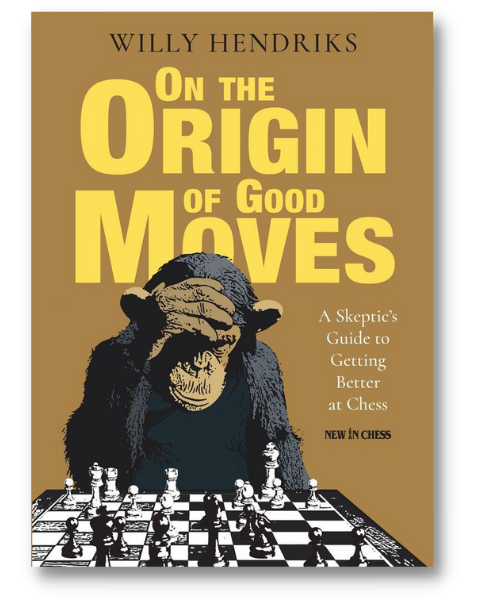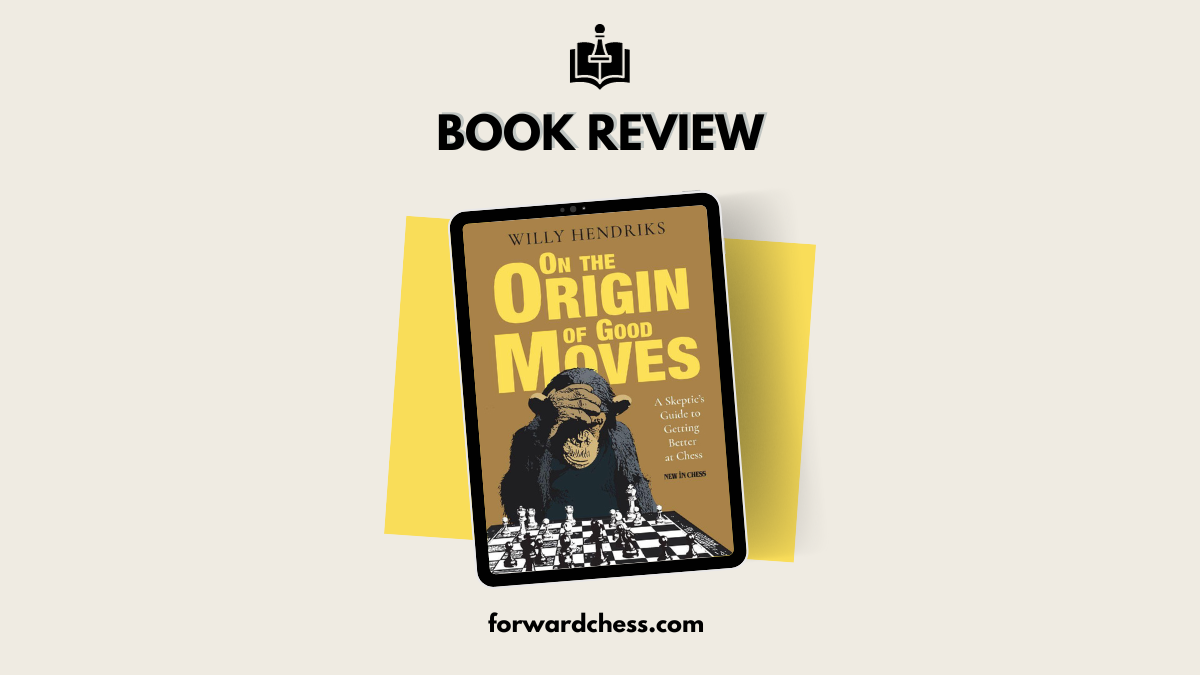Book Review of On the Origin of Good Moves
“This is a book about the history of improvement in chess – about the improvement of the chess-playing species as it were – but I hope it might contribute to the improvement of the chess-playing individual (i.e. you, the reader).”
– the author
In his previous book, Move First, Think Later, IM Willy Hendriks challenged popular views on how chess players calculate variations and improve their chess skills. This new book uses a similar approach and challenges the prevailing views on how the principles of chess have developed and how the level of the top chess players has improved throughout history. In one sense, this book is a loose sequel to his previous book, and it covers some of the same themes.

The book is divided into 36 chapters, each starting with some exercises for the reader to solve. The solutions to the exercises are given in the text of the chapter. The exercises cover a wide range of themes and are not just the typical “find the winning move” types, and many of them are quite challenging. In total, there are 166 exercises spread throughout the book. The historical development covers the period from Greco to Tarrasch.
The overarching thesis of the book is that chess development has not been the tidy process that many previous authors would have us believe. He disputes Kasparov’s claim that “The stages in the development of chess resemble the path taken by everyone who proceeds from a beginner to a player of high standard.” Hendricks shows that this neat picture is false, and he says that the development of chess has followed a somewhat evolutionary approach with some random and chaotic features thrown in.
Hendriks also challenges some of the stereotypical portraits of historical players. For example, Adolf Anderssen is usually depicted as an attacking player, while Paul Morphy is depicted as a positional player. Hendriks states that the opposite is closer to the truth:
“Those who think I’m cherry-picking to turn Anderssen’s reputation upside down are invited to play over the games from the serious tournaments he was in. I’m sure you will find that this romantic, anti-positional ‘attack at all costs’ is a nonsensical caricature.”
Other interesting aspects of the book include a reappraisal and approval of Greco’s contributions, a less faltering view of Philidor’s contributions, and some doubts that Steinitz was the discoverer of positional play.
Two examples from the book are given below, with annotations. Both games involve Adolf Anderssen, who features heavily and positively in the book.
On the Origin of Good Moves: Example 1
On the Origin of Good Moves: Example 2
In summary, the book provides a fascinating history of chess development that is written in an engaging and interesting style. It provides a much-needed and timely alternative thesis on chess history. Hendriks has strong views on some subjects, but he backs them up with solid evidence. The end result is a pleasure to read.
Have any thoughts or questions? Let us know in the comments!
For a limited time, get On the Origin of Good Moves with a special 10% discount offer at forwardchess.com.
- The Power of Pattern Recognition: The Woodpecker Method 2 - August 20, 2024
- Rock Solid Chess: Volume 2 - February 21, 2024
- Unsung Heroes of Chess - February 19, 2024
